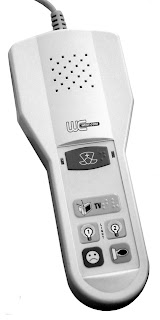The elevation of former Interlocutory Attorney Thomas W. Wellington to the TTAB brings the Board's membership to 19. Set out below is the current roster of TTAB Administrative Judges, beginning with Chief Judge Sams and then proceeding alphabetically from B to Z.
 Sams, J. David, Chief Judge
Sams, J. David, Chief Judge: Appointed to TTAB in 1981; Appointed Chief Judge, 1986;
Prior Professional Experience: Trademark Examining Attorney; Petitions and Special Projects Attorney, Office of the Assistant Commissioner for Trademarks;
Education: B.A., Davidson College; J.D., Vanderbilt University.
Bergsman, Marc A.: Appointed to TTAB in 2006;
Prior Professional Experience: Trademark Examining Attorney; Trademark Managing Attorney; TTAB Interlocutory Attorney; Dickinson Wright PLLC, Washington, D.C.;
Education: B.A., Miami University of Ohio; J.D., Cleveland Marshall College of Law, Cleveland State University.
Bucher, David E.: Appointed to TTAB in 1998;
Prior Professional Experience: Trademark Examining Attorney; Senior Examining Attorney; Legislative Assistant, Office of U.S. Senator Paul Simon; Director, Trademark Examining Organization; Deputy Assistant Commissioner for Trademarks;
Education: B.A., Eastern Mennonite University; J.D., George Washington University.
Cataldo, Peter W.: Appointed to TTAB in 2006;
Prior Professional Experience: Trademark Examining Attorney; TTAB Interlocutory Attorney;
Education: B.A., Canisius College; J.D., Albany Law School.
Drost, Albin F.: Appointed to TTAB in 2001;
Prior Professional Experience: Attorney in Judge Advocate General's Corps; Trademark Examining Attorney; Associate Solicitor, Deputy Solicitor, Acting Solicitor in Office of Solicitor;
Education: B.A., College of the Holy Cross; J.D., Dickinson School of Law of the Pennsylvania State University.
Grendel, Charles M.: Appointed to TTAB in 1999;
Prior Professional Experience: Private Practitice in Oregon; Trademark Examining Attorney; TTAB Attorney-Advisor;
Education: B.A., Stanford University; J.D., University of Oregon School of Law.
Hairston, Paula T.: Appointed to TTAB in 1994;
Prior Professional Experience: Interlocutory Attorney; Assistant to the Assistant Commissioner for Trademarks; Petitions and Special Projects Attorney;
Education: B.A., University of North Carolina at Greensboro; J.D., Catholic University of America.
Hohein, G. Douglas: Appointed to TTAB in 1990;
Prior Professional Experience: Trademark Examining Attorney; TTAB Interlocutory Attorney;
Education: B.A. with highest distinction, University of Virginia; J.D., University of Virginia.
Holtzman, Terry E.: Appointed to TTAB in 1999;
Prior Professional Experience: Trademark Examining Attorney; TTAB Interlocutory Attorney;
Education: B.A. with honors, American University; J.D., George Mason University.
Kuhlke, Karen: Appointed to TTAB in 2005;
Prior Professional Experience: Trademark Examining Attorney; TTAB Interlocutory Attorney; Steptoe & Johnson, Washington, D.C.;
Education: B.A., University of Kansas; M.A., Columbia University; J.D., Georgetown University.
Mermelstein, David: Appointed to TTAB in 2006:
Prior Professional Experience: TTAB Interlocutory Attorney; TTAB Supervisory Interlocutory Attorney; Trademark Examining Attorney.
Education: B.A., New College, Hofstra University; J.D., American University.
Quinn, T. Jeffrey: Appointed to TTAB in 1988;
Prior Professional Experience: Trademark Examining Attorney; TTAB Interlocutory Attorney;
Education: B.A., Tulane University; J.D., Tulane University School of Law.
Rogers, Gerard F.: Appointed to TTAB in 1999;
Prior Professional Experience: Trademark Examining Attorney; Assistant to the Assistant Commissioner for Trademarks; TTAB Staff Attorney;
Education: B.A., University of Massachusetts Amherst; J.D.,
magna cum laude, New England School of Law.
Seeherman, Ellen J.: Appointed to TTAB in 1987;
Prior Professional Experience: Associate, Fross, Zelnick, Lehrman & Zissu (New York, NY); Trademark Examining Attorney; Staff Assistant, Special Assistant to the Assistant Commissioner for Trademarks;
Education: A.B., Brandeis University; J.D., New York University School of Law.
Taylor, Jyll: Appointed to TTAB in 2006;
Prior Professional Experience: TTAB Interlocutory Attorney; Trademark Examining Attorney;
Education: B.A. University of North Carolina at Chapel Hill; J.D., Howard University School of Law.
Walsh, James: Appointed to TTAB in 2005;
Prior Professional Experience: Trademark Examining Attorney; USPTO Administrator for Trademark Policy and Procedure; TMEP Editor; Arnold & Porter, Washington, D.C.;
Education: B.A., College of the Holy Cross; J.D., Georgetown University.
Walters, Carlisle: Appointed to TTAB in 1996;
Prior Professional Experience: Office of Legislative and International Affairs, Trademark Counsel; Administrator for Trademark Legal Policy for Assistant Commissioner for Trademarks; TMEP Editor
; Of Counsel, Finnegan, Henderson, Farabow, Garret and Dunner;
Education: B.A., Clark University; J.D., New England School of Law.
Wellington, Thomas W.: Appointed to TTAB in 2007;
Prior Professional Experience: TTAB Interlocutory Attorney; Trademark Examining Attorney; private practice;
Education: B.A., University of Maryland at College Park; J.D., American University Washington College of Law.
Zervas, Albert: Appointed to TTAB in 2005;
Prior Professional Experience: Trademark Examining Attorney; TTAB Interlocutory Attorney; Kaye Scholer, New York; Marks & Murase, Washington, D.C.;
Education: B.A. and J.D., University of Virginia.
.

































